#sumiyoshi kamado
Explore tagged Tumblr posts
Text
What sets the Kamados' apart is their kindness, their unlimited, life-changing, radical empathy and kindness; it's their kindness and openness that connected Yoriichi to them eternally
Yoriichi is many things: he is heroic, giving, and kind, but for the world (and to himself), Yoriichi is the strongest, which is how he is defined and treated. His brother envies him, the corps shuns him for failing to kill Muzan, and he holds himself accountable for the death of his family and for saving the world. It's really hard to fault him or others for having all these expectations because Yoriichi possesses otherworldly powers, but all these hopes can take a toll on him and help isolate and even dehumanize him. To everyone concerned Yoriichi is god but not to the Kamados
When he meets the Kamados and saves them Yoriichi is at a low point of his life burdened by failures and losses, Sumiyoshi offers him to pass down his legacy and a chance to talk but he refuses because to Yoriichi it must be foreign to take and unburden but even The strongest is still a human so he comes back later in seeking a listening ear and shares his story with Sumiyoshi who accepts and sympathizes with him, sees him as a person who is wounded, despite not knowing how to react or ease Yoriichi's pain he lets him speak which is already plenty because it created the space for him to be a person instead of a symbol and when Suyako shows up to find him in tears she pats him gently and offers to make him a meal, two simple but genuine actions that touch his heart and lighten it up a little and inspire him to give the family his precious earrings and pass them the sun breathing forms
By simply letting him talk, by making him food and by being the living reminder of his good deeds, they gave so much healing and strength to Yoriichi who in exchange gave them the power of the sun that provided them protection, strength, and healing for many generations
Tanjiro undoubtedly stands out in the story for his unique form of breathing, but you could argue that he stands out for his kindness just as much. As helpful as his physical strength was in his journey, it's his kindness that kept him afloat, pushed him further and made him friends and allies. It is his kindness that literally lifted him up and pulled him back to life with the hands of every person he saved with his gentleness


#kny yoriichi#yoriichi tsugikuni#sumiyoshi kamado#suyako kamado#tanjiro kamado#demon slayer#kny#text#a#i have very little posts on here about yoriichi because I'm intimidated by his complexity and character#and really scared about my words not doing him justice#kimetsu no yaiba
38 notes
·
View notes
Text
KNY Incorrect quotes#36 Shippers
You are the only one who still follows and helps Yoriichi...Tho he tries to lose and evade your help after ...his defeat...but that stopped when he stayed with the Kamado's
Sumiyoshi*watching Yoriichi coming home after a fight, worried sigh*Huh, he brings home a sword, If you ask me, he should've brought home a woman...or man...or just someone to share his life with
Suyako & Sumire*Both agree*
Kakushi Y/n: Excuse me, does Yoriichi Tsugikuni reside here?*Smiling at the Kamado Trio family*
Sumiyoshi and Suyako point, dumbstruck
Kakushi Y/n*Bowing in gratitude and going inside the house*Thank you~
Sumiyoshi: Woo!...sign me up to be the best man!
Yoriichi: Sumiyoshi, I-Y/n! Uhhhh...*Is holding the handkerchief you gave him to bandage his leg when he sprained it last time*-you cleaning my handkerchief here- Well, actually it's your handkerchief, isn't it, I mean...
Kakushi Y/n*Smilling at him fondly, seeing him trying to talk*
Yoriichi*Coughs into a fist and looks into your eyes*... Would you like to stay for dinner?
The Kamados*Eavesdropping* Would you like to stay forever!?
Kakushi Y/n*Reaches over to close his palm holding handkerchief closing it for him to keep it* Dinner would be great~
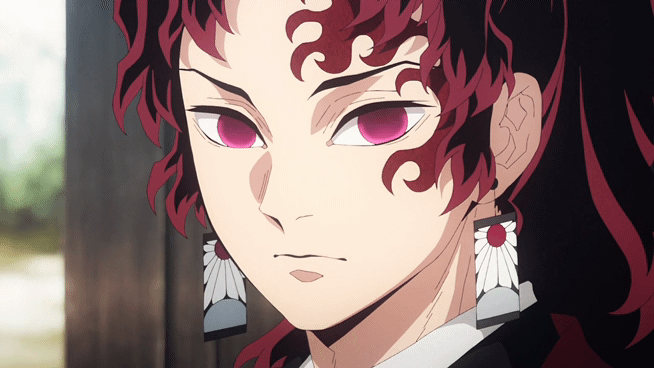
#demon slayer#demon slayer x y/n#demon slayer x reader#kimetsu no yaiba#kny#kny x reader#kny x y/n#yoriichi tsugikuni#yoriichi tsugikuni x reader#yoriichi tsugikuni x y/n#yoriichi x reader#sumiyoshi kamado#suyako kamado#sumire kamado#kny fluff#kny incorrect quotes#demon slayer incorrect quotes#incorrect quotes
1K notes
·
View notes
Text
😭 FRFRFRRRR
When am I gonna get the Yoriichi/Sumayoshi/Suyako fic I deserve
just Sumayoshi and Suyako being saved by this man who they think must be some great man with the wisdom of ages who knows all there is and so much more
only for them to find out he is a giant disaster who really only knows how to sword fight
so they drag him home to feed him because this man saved their lives and he just burnt rice somehow, so the least they can do is get him a decent meal
several years later Yoriichi looks up at the sky and wonders how the fuck he managed to end up married to the two best people in the world
He gives his earring and teaches his techniques to the children (Suyako was the one who came up with the idea to make it a dance so the kids would have more fun learning it) and when it seems like his time is coming to an end (the side effects of the mark) Sumayoshi and Suyako laugh and say “ya no, we’re no doing that” and manage to keep him alive for another sixty years.
just give me a fic of this disaster sword man somehow ending up with the most functional and caring people in the world
52 notes
·
View notes
Text





art from a while ago i never posted
#in the first 2 thats an oc not shinjuro#last 3 is a lazy comic i did for an au#shart art#demon slayer#kimetsu no yaiba#kny#demon slayer fanart#kny fanart#kokushibo#michikatsu tsugikuni#yoriichi tsugikuni#yoriichi#uta kny#kny uta#sumiyoshi kamado#kny oc#kny oc art#kny au
31 notes
·
View notes
Text
Sumire, don't cry! Queen never cry! 💜
I am so sorry for butchering Yoriichi.
#my art#my fanart#demon slayer#kimetsu no yaiba#鬼滅の刃#demon slayer fanart#animatic#yoriichi#yoriichi tsugikuni#tsugikuni yoriichi#sumire#sumire kamado#kamado sumire#sumiyoshi#sumiyoshi kamado#kamado sumiyoshi#the ki sisters#queen never cry
36 notes
·
View notes
Text
Ok. One of my absolute favorite fics and one I'm pretty proud of is Our Legacy Status: Finished one shot. Part of ongoing series.
Summary
Ghost Sumiyoshi goes to check in on an injured Tanjirō after the fight with Waxing Moon Six. Ghost Yoriichi has the same idea. They chat about their shared legacy in the form of Tanjiro Kamado. A.K.A. A possible explanation as to what lead up to Tanjirō having that dream about his ancestor and the first sun breather while in a coma.
I just really wanted to see more Yoriichi and more importantly Yoriichi interacting with the Kamado family. I just love love love pointing out how Tanjirō has so many similarities to Yoriichi while also being a bit of a carbon copy of his ancestor Sumiyoshi. He's a mix of them both and I'm choosing to believe its cause Yoriichi got adopted by the Kamado family. Yeah. Yoriichi did leave a legacy in the form of the Kamado family themselves.
#Avid's published fics#ao3#kny fanfic#demon slayer#kimetsu no yaiba#tanjirou kamado#yoriichi tsugikuni#sumiyoshi kamado#kny
24 notes
·
View notes
Text
How can I not love him
Demon Slayer: Kimetsu no Yaiba – Swordsmith Village Arc
#yoriichi can your days not be haunted for just a minute#demon slayer#demon slayer edit#yoriichi tsugikuni#sumiyoshi kamado#kimetsu no yaiba#鬼滅の刃
50 notes
·
View notes
Text










The brothers learn to understand each other's needs with the help of Sumiyoshi’s family.
One of my favorite chapters! I wanted to include the emotion clones from season 3, so I made them quadruplets haha. It’s explained more in the chapter.
I hope you enjoy! Please leave me your thoughts.
#demon slayer#kimetsu no yaiba#demon slayer fanfic#yoriichi tsugikuni#michikatsu tsugikuni#sumiyoshi kamado#aizetsu#urogi#sekido#karaku#au where the emotions are brothers#quadruplets#siblings au#fuck canon#writing#ao3 fanfic#fanfic#literature
8 notes
·
View notes
Text
the silliness from people calling every red haired older man "Tanjiro's dad" inspired me to make this edit
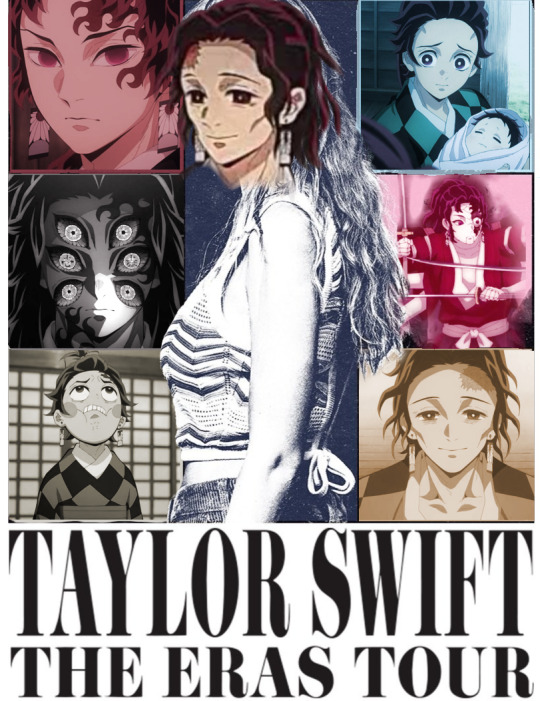
#the guy on the lower left isn't Tanjiro that's Sumiko from the entertainment district lol#idk I just wanted to fill up that spot after I ran out of pictures lmao#no hate to people who don't read the manga I just made this edit for shits and giggles#demon slayer#kimetsu no yaiba#demon slayer memes#sumiyoshi kamado#Kokushibo#tanjuro kamado#tanjiro kamado#michikatsu tsugikuni#yoriichi tsugikuni#kimetsu no yaiba memes#kny memes#kny#Kokushibo is folklore while Yoriichi is evermore#but I kinda also see Kokushibo being in the reputation era#Tanjiro's dad#demon slayer tanjiro#demon slayer kokushibo#demon slayer yoriichi#upper moon 1#when Taylor said leaving like a father running like water she was talking about Kokushibo#yoriichi type zero#kamado family#Tsugikuni brothers#Tsugikuni twins#demon slayer edit#kimetsu no yaiba edit#kny edit
116 notes
·
View notes
Note
*runs up to you* this user loves sumiyoshi kamado 😌

i dont think ive ever seen a sumiyoshi fan before but here it is for all the sumiyoshi fans out there!!
#userbox#this user loves#this user#anime#manga#demon slayer#kny#kimetsu no yaiba#request#sumiyoshi#sumiyoshi kamado#kamado#kamado sumiyoshi#green#id in alt
12 notes
·
View notes
Text
The Demon Slayer Timeline, part 01
[Lots of spoilers for obvious reasons] The Demon Slayer Timeline is actually, a really long one. While it does not follow the totality of the Japanese history, it follows closely the beginning and falling of the Samurai era. While the main plot takes place in the Taisho Era [1912-1924], Sumiyoshi Kamado and Yoriichi Tsugikuni take us to the Sengoku Jidai [1467-1563], and Muzan to the Heian Era [794-1192] ( Muzan drop that skincare routine). But let us start from the beginning.
Muzan says that he was turned into a demon by a doctor in the Heian Era.

The Heian Era [c.794-1192] is today regarded as one of the times of highest culture, even though it was one of the [many] times of political and military conflicts. After conflits between the imperial court and the Buddhist sects that were starting to have way too much power the capital was moved from Nara to Heian-kyo - today known as Kyoto - to be safely way. That said, it also started a religious reform with the introduction of new kinds of Buddhism. [with less interest in power obviously, but still kept at a safe distance of the court] Tendai Buddhism and the Pure land Buddhism would start gain attention during this times and the temples would open their doors to every one of every type of social class [as we can see with Gyomei Himejima, the Rock Hashira that was a blind man that took care of orphan children in a Buddhist temple]. The temples stop having political power, but they also stop having financial aid. So, to survive they had to start exploring the natural resources of their territories. It's not going to take long before the temples start to argue about say territories, and to protect them, they will start to train the farmers that inhabited it, creating what would become a military class. In 'other hand, in the capital we see a court that is way to centred on herself. The Fujiwara clan was the family with the biggest amount of power. Fujiwara women would marry into the Imperial family in a what could be called genetic colonialization. In the 10th century the Imperial household could not function without the Fujiwara one, starting the tradition were until they reached adulthood the emperor had a Fujiwara regent, so basically it was the Fujiwara that ruled not the Imperial family. But, after 170 years, in 1068 an emperor without a Fujiwara mother sits on the chrysanthemum throne. Go-Sanjo would start to eradicate the Fujiwara by abdicating, leaving the throne to his already adult son. And the same would happen for the next 2 emperors. But by starting to cut ties with the Fujiwara, the imperial family cut off his right arm, and the arm that had the military power, nonetheless. Japanese had a natural border against enemies, that also meant that they did not have to where to expand their natural territory. So, without new territories to be conquered, the only solution was to start fighting each other for the lands that existed. The families that lived far from the capital were old families that knew their territories like the palm of their hands. With the crescent responsibilities of safeguarding their territories, like with the temples, this Shoen [local provinces] start to train their inhabitants [just like the temples]. We start to see the conquest of territories, and when a clan was defeated, the warriors would start to serve the winning clan. It's the birth of the Samurai Code. In the 12th century we start to have clans that are ready to go against the imperial court. In 1160 we have the Heiji war, were the Minamoto and Taiga clans are confronting each-other at the capital, and the Taiga family wins, and with entering the court life would become an exact copy of the Fujiwara. The only heir and survivor of the Minamoto clan starts to see the military machine of the Taiga to transform into an aristocratic one wand waits until 1180 to strike back. In 1185 the Minamoto would win the Genpei war staring the 1st ever Shogunate rule.
When Tanjiro goes to the Swordsmith, village, he encounters the mechanical doll made by Kotatsu’s ancestors called “Yoruichii Type Zero” where he goes on saying that that face is familiar to him and Kotatsu says that that technology is from the Sengoku Era.
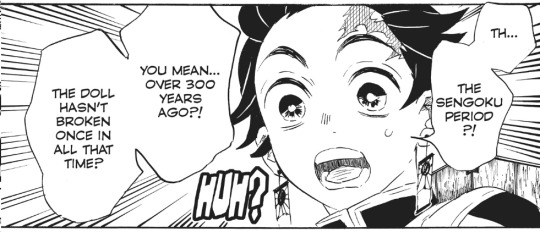
Then after that we start to see Tanjiro’s flash backs of his ancestor Sumiyoshi Kamado and his encounter with Yoriichi Tsugikuni and all of that is confirmed with the backstory of Upper Moon 01 - Kokushibo.

Now, what was the Sengoku Era? Also known as the “warring states era”, the Sengoku-Jidai [c.1467-1573] was the time where the Japanese archipelago was buried on the total anarchy that was the civil war. So, we have a circa 275 years jump. After the failed rule of the Ashikaga Shogun [Yes because history spoilers, after the Minamoto Shogunate there was more was, more war, and another Shogun], the daimyo [local governors] continue to train their locals to defend their territory. Thanks to the fidelity bonds, the commoners responded to their daimyo, while the daimyo had to respond to the Shogun. Since the Shogun [we don’t even talk about the emperor since he was basically a poppet] no longer protected the daimyos they started to rebel against him saying that he was the first that broke the fidelity law. The commoners, started to learn specific combat techniques - the Kenjutsu, art of the sword - and would develop to what we know call samurai. The word samurai comes from the word “saburau” which means “to serve”, the rising of the samurai class marks the beginning of the feudal era in Japan. At the beginning, these warriors could have two jobs - be warriors and farmers as an example. When Hideyoshi (we will soon talk about him) came to power he required that they choose one or the other, but as long as a samurai remained loyal they were guaranteed a good life. The samurai's weapon of choice was a 2-sword combination. The 1st one, was the combat sword, a long one called (surprise) Katana. The 2nd one was a small curved one called Wakizaki that served to cut one’s stomach (note: important I tell you). Now, while everyone was fighting each other for territory, a man in the middle of the territory started what would soon become the union of Japan. Oda Nobunaga [織田 信長 1534-1582], as the eldest son that everyone thought would not do much. Turns out he collaborated with his uncle to kill his brother, to then kill said uncle. At 25 years old no one was bad mouthing him in Owari anymore. He started then to expand his territories were battle after battle he seemed unstoppable. Then Nobunaga’s troops were defeated for the 1st time, and Akeshi Mitsuhide [明智光秀 1528-1582] would profit this momentarily loss of confidence on Nobunaga to obligate him to commit suicide. But Mitsuhide's victory was short lived since Toyotomi Hideyoshi [豊臣 秀吉 1527-1598], learning what had succeeded rushed to confront Mitsuhide, ending up defeating him. (Man, I love telling everyone this part cause this is what I call plot twist after plot twist! And we aren't finished yet!) Hideyoshi would be de one finishing what Nobunaga started and re-uniting wall the territory under one ruler. But, after Hideyoshi's dead, his son was still a minor (literally a baby). He would go on naming 5 daimyos as regents in case 1 rebelled the other 4 would protect the heir. Still that did not stop Tokugawa Ieyasu [徳川家康 1543-1616] from rebelling. At 1600 Tokugawa would win the legendary Sekigahara battle, and in 1603 he would (not so kindly) ask the emperor for the Shogun title. He would go on to establish the longest Shogunate in Japanese history. So as the saying goes: “Nobunaga oiled the national rice cake, Hideyoshi kneaded the dough and, in the end, Ieyasu at down and gobbled it up”.
Bibliography: CHAPLIN, Danny. 2018- Sengoku Jidai: Nobunaga, Hideyoshi and Ieyasu: the three unifiers of Japan. CreateSpace Independent Publishing Platform. Ebook; CLEMENTS, Jonathan. 2017 - A Brief History of Japan: Samurai, Shogun and Zen. The extraordinary story of the land of the rising sun. Clarendon: Tuttle Publishing.Ebook; HILLSBOROUGH, Romulus. 2017 - Samurai Assassins: "Dark Murder" and the Meiji restoration, 1853-1868. Jefferson: McFarland & Company. Ebook; MANSON, R.H.P ; CAIGER, J.G. 1997 - A History of Japan. Clarendon: Tuttle Publishing, 1997. Ebook;
#demon slayer#demon slayer history#demonslayerfromhistorytofantasy#demon slayer from history to fantasy#japanese history#history#research#history research#kimetsu no yaiba#kamado tanjiro#muzan kibutsuji#sumiyoshi kamado#yoriichi tsugikuni
50 notes
·
View notes
Text
KNY Au Art Dump!
Era Swap Au
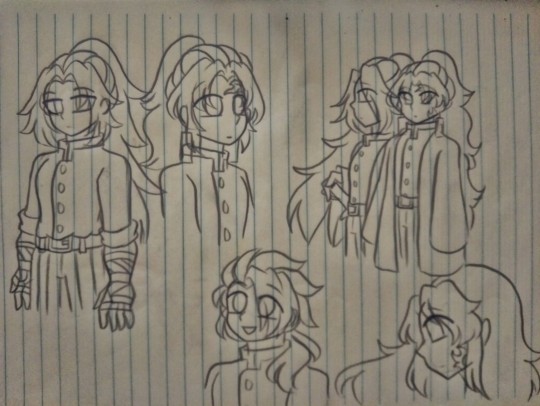
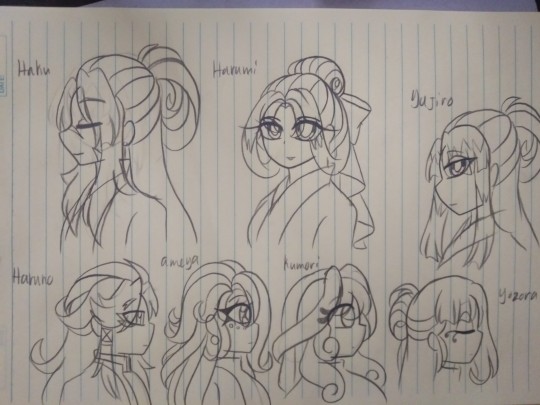
The Wildflower Hashira Au

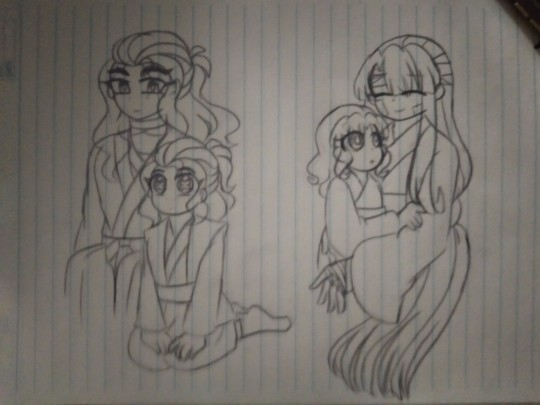

Yuichiro it the Ice Hashira as Kanae is the Petal Hashira,both are alive along side Rengoku and others
Next Generation Au ft.Older! Yuichiro and Muichiro,along with Older! Tanjiro! Both twins looked like Michikatsu and Yoriichi!

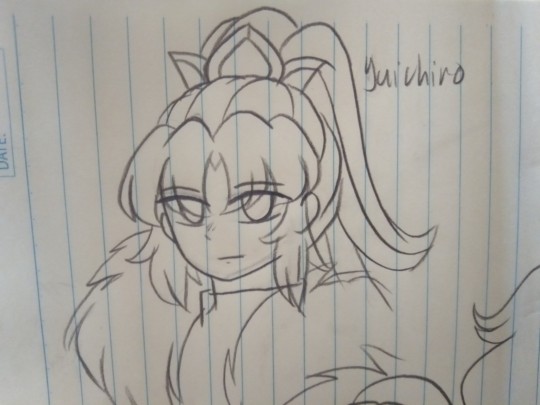

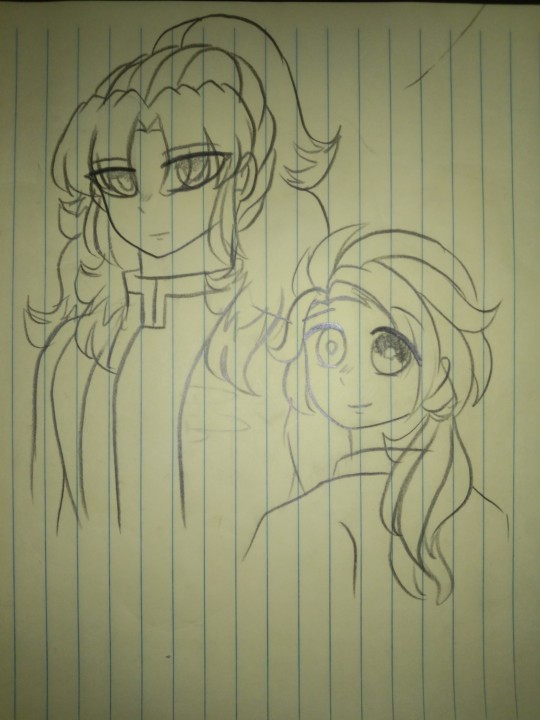
Next part of my Era Swap Au!
Era Swap Au: if the Sengoku Era Demon Slayers and Taisho Era Demon Slayers switched places.
The Wildflower Hashira Au: Oc-centric,Oc x Haganezuka Hotaru! This is about my oc Shōga Yūgana who is the Flower Hashira instead and what her presence may have change within the timeline!
Next Gen Au: this takes place after The Wildflower Hashira Au! Yuichiro and Muichiro are the only pillars left with new ones are in!
Au's by me!
Kimetsu No Yaiba: Demon Slayer by Konoharu_Gotougue
#oc#kny oc#kny au#demon slayer au#demon slayer oc#kimetsu no yaiba au#kimetsu no yaiba oc#tokito yuichiro#tokitou muichirou#haganezuka#hotaru haganezuka#Shōga Yūgana#oc x canon#yoriichi tsugikuni#michikatsu tsugikuni#sumiyoshi kamado
24 notes
·
View notes
Text
KNY Incorrect quotes#40 He loves it-
Sumiyoshi, talking about Kakushi You: Is this a friend of yours, Yoriichi?~
Yoriichi: Kind of? Not really...They're in my life and there's nothing I can do about it...
Kakushi Y/n*Behind him brushing his hair tenderly*Ehehe~
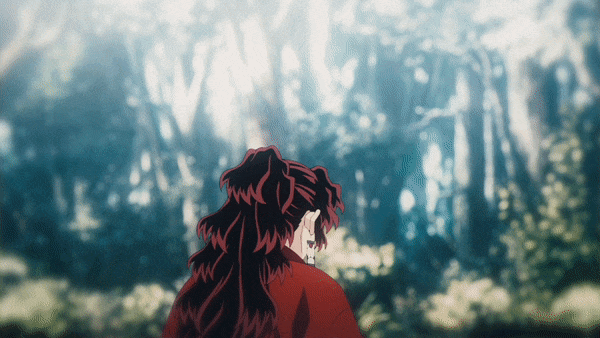
Part 2 of:
#demon slayer#demon slayer x y/n#demon slayer x reader#kimetsu no yaiba#kny x reader#kny x y/n#yoriichi x reader#yoriichi tsugikuni x y/n#yoriichi tsugikuni x reader#yoriichi tsugikuni#sumiyoshi kamado#kny fluff#kakushi y/n#kny incorrect quotes#demon slayer incorrect quotes#incorrect quotes
1K notes
·
View notes
Text
i don't think tanjiro is the successor of sun breathing 'despite not being related to yoriichi'. i think it's that yoriichi is family to the kamados
in kny, family is whoever loves you. rui tries to make a family but ultimately fails not bc they're not blood related but bc he doesn't really love them. on the other hand, kanae, kocho, and kanao are sisters. zenitsu's master is his grandfather. inosuke's family were the boars (and then of course later, his birth mother kotoha, because tho he barely has any memories of her, he remembers she loved him dearly)
yoriichi was an unwanted child and later an unwanted brother when michikatsu's hatred for him festered and grew. he was rejected from the corps and only had the kamados. when he felt like his existence was worthless, it was the sumiyoshi who told him he deserved to be here as much as everyone else and made the effort to weave yoriichi into the family by passing down his earrings and sword form. he was rejected by his family but accepted by another. if family is whoever loves you, then that's yoriichi's people, and that love was why tanjiro succeeded him
#smth smth tsuyuri kanao carries on kocho and kanae's will and succeeds them by killing douma#smth smth kamado tanjiro carries yoriichi's will and succeeds him by killing muzan#do you see the vision#do you get my point#im bad at explaining but like i sincerely believe sumiyoshi and suyako accepted him as one of their own#i think that love was why sumiyoshi managed to learn sun breathing too. kny has this huge thing of wills and emotions passing through bonds#and no one in yoriichi's life at that point really loved him save for the kamados#anyway the reason why i got to thinking about this is bc i got.reminded again that in kimetsu gakuen#yoriichi just lives with sumiyoshi and suyako#just straight up. why the fuck is he there dhsgsgshhssh#where the fuck is uta. she's probably fucking dead too tbh but that panel was so funny#he's just there. he raises his niece and nephew on his off time. he shows up at the family barbecue#one day tanjiro is gonna open his mouth and talk about kokushibou and he'll go oh that's where aniue is working these days#and tanjiro will bump into koku again at some school fest and go YOU'RE MY UNC'S TWIN???#kny#kimetsu no yaiba#demon slayer#kamado tanjiro#tsugikuni yoriichi
133 notes
·
View notes
Text
Kamado Family Name Analysis
竈門: Kamado A rare but existing surname, the hearth (竈, kamado) is also an important gateway (門) through which disease can enter a home and make a family sick, so it therefore needed special attention in order to keep the family healthy. Likewise, it required care so as not to cause fire damage. However, it was likewise the source of sustenance for a house’s inhabitants, so the state of a hearth also reflects the state of the family. To say things are lively around a hearth is to say that a family is doing well, to say that the hearth is broken is to say that they’ve lost their fortune, and so on. You could also think of the fire itself sometimes being a cause for danger, something susceptible to evil influence, like how it might burn humans, so it took having a god of the health to protect against that too. These are reasons why the god of the hearth has been worshiped since ancient times, not only for protection from the dangers of fire, but also for prosperity.
As for the the personal names throughout the generations, follow me below...
Sengoku Period (often considered 1467–1568, though other dates are in use):
炭吉: Sumiyoshi Although you don’t typically see charcoal (炭, as sumi or tan) in a name, 吉 isn’t all that uncommon, whether as yoshi or kichi. It means “luck.” It’s worth stating right away that although making charcoal means working with fire for a few days at a time, it also means the longer-term work of forest management. A charcoal worker is nothing without plants. Notice the 山 (mountain, yama) that is also with 火 (fire, often hi or ka) in the 炭.
すやこ: Suyako Presented only in phonetic hiragana, we don’t have kanji to read into, but this is a pretty clever name. Because how -ko makes it sound like a typical girl’s name, similar to her descendants Nezuko and Hanako, the su also makes it feel similar to the rest of her family. Suya doesn’t really mean anything on its own, but suyasuya is an onomatopoeia for “sleeping soundly.”
すみれ: Sumire Another clever one presented only in phonetic hiragana. Sumi makes it sound like she inherited the charcoal family name, but sumire means “violet,” so this is a precursor to later Kamado family naming trends. (However, the flowers she gave Yoriichi were not violets, but Catharanthus roseus—as a fun tidbit, these are called nichinichisou, that is, “sun-sun-grass” (日々草).)
Meiji Period (1868–1912) & Taisho Period (1912–1926):
炭十郎: Tanjuurou (Whatever)+���(rou) is pretty common in men’s names, since it’s basically like adding “son” to the end of boy’s name. Using numbers in men’s names (like the number 10 here, 十) used to be relatively common too.
葵枝: Kie Although 葵 (aoi or ki) is commonly translated as “hollyhock” (due to being conflated with tachiaoi), it is more accurately translated as “wild ginger,” but this is annoying because even though it has a similar scent, it is not actually related to ginger. Let’s just call this low-growing herb aoi, since it has a lot of religious connotations with ancient shrines and festivals—but this is also annoying, because there is a character named Aoi and her name is written phonetically and might be in reference to the color. So let’s use the Latin name for this genus, Asarum. 枝 (e) is “branch,” so Kie’s name is literally “a branch of Asarum.” But, if we want to go a step further, in older ways of transcribing Japanese, 葵 used to be written phonetically as a-fu-hi with a-fu meaning “to encounter (later on transcribed as au)” and hi being a word representing a god’s power, so it’s said that the a-fu-hi/aoi plant symbolizes coming upon incredible power. How ironic that Kie married into a family known for Hinokami Kagura.
炭治郎: Tanjirou We’ve covered 炭 and 郎, so why the 治? This is a pretty common way of adding the ji sound to a guy’s name (like Hakuji), but why this one instead of, say 次 or 二? This may be because Gotouge wanted to give his name both fire (火) and water (水)! You can see the fire in the charcoal kanji, but the three dots at the left side of 治 are the water radical, which often means the kanji might have some association with water. Although 治 literally means things more like “quell” or “reign” or even “heal,” it can also mean being in control of something like a river.
禰豆子: Nezuko First off, most OS systems do not express this first kanji correctly. The left radical would look more like ネ, with 爾 on the right. Alas, 禰 (ne) is a bit of a rare kanji in the first place, meaning “ancestral shrine.” This is kind of heartwarming what with how connected Nezuko is with her family, and how the checkerboard pattern the Kamado family uses also denotes a continuity of family. As for the 豆 (zu or dzu or mame), this is “bean.” Beans are deeply tied with warding off demons. This is especially seen in the Setsubun custom of throwing beans at demons to cast them off. But, more recently I stumbled upon the knowledge that the kurobe tree (Japanese arborvitae/Thuja standishii), a coniferous evergreen with flattened branchlets, is also called nezuko (in phonetic katakana, ネズコ).
竹雄: Takeo “Bamboo man,” with 雄 (o or yuu or other readings) being a pretty common thing to stick to the end of a man’s name. It’s a kanji with a sort of heroic ring to it if you're adding the masculine -o ending anyway). Fast-growing bamboo (竹, take) can be a problem if, say, you primarily focus on making charcoal out of oak, but bamboo charcoal has a lot of uses for keeping spaces around the home free from humidity and bugs. What’s more, bamboo itself is a bit of a heroic plant—it grows straight, stays strong through the winter, and can stand a lot of pressure and still flexibly bounce back. I've also heard of it being associated with happiness because there is a bamboo radical at the top of the kanji for "smile/laugh" (笑).
花子: Hanako “Flower Child.” The plants are a bit obvious in this one.
茂: Shigeru Another common manly name, “to flourish.” Like plants would flourish.
六太: Rokuta I have tried really, really hard to look for hidden meaning this one. He’s just “six” (六, roku) with another common way of ending a boy’s name, 太 (ta or tai, for grand, broad, magnificent, or fat). Tanjuurou and Kie weren’t feeling very creative by the time they got to this one. Couldn’t you guys at least have given him a plant reference? That would have really helped my meta out, thanks. But maybe not all is lost on this name! After all, remember how we might conflate 火 (fire/hi) with 日 (sun/hi) in Hinokami Kagura? Arguably, the sun is just as important for charcoal workers who manage the forest! 日 is not the only way of writing "sun." There is also 太陽 (taiyou)!
Heisei Period (1989–2019) & Reiwa Period (2019–current):
カナタ: Kanata KAMADO FAMILY, EXPLAIN. First off, nobody else born into the family has a name in katakana, and by the era Kanata is born, this would be pretty unusual for a boy. I can only assume this choice was made in order to make an obvious connection to his great-great-grandmother’s name, カナヲ (Kanao). That being said, did they simply forget to give their eldest son the traditional charcoal name? Or did they notice a plethora of girls throughout this series named “Sumi” and decided to avoid it? In that case, too bad they forgot all about the existence of Ubuyashiki Kanata! (Her name was written in phonetic hiragana, かなた.)
炭彦: Sumihiko Oh good, the Kamado family got their act together and remembered the kanji they were supposed to pass on. As for that -hiko, I’ve heard some Japanese fans try to read into how it was also used in one of Muzan’s fake names, 月彦 (Tsukihiko, as he went by in Asakusa when married to a woman named Rei), but 彦 (hiko) is also so common at the end of men’s names that I don’t see any merit in digging for connections. What we can dig into, though, is 和語 (wago), that is, native Japanese words that existed before the influence of Chinese and the writing system that went with it. Hiko meant “a boy endowed with a divine spirit” (the equivalent for a girl was hime, which you might recognize later became a word for “princess.”) And why stop there? This still brings us back to hi, the divine power that is sometimes just a divine power, sometimes is fire, and often is the sun.
Speaking of the sun, here’s a couple honorary Kamado descendants, because they have really good homage built into their names:
燈子: Touko Remember that 火 (hi) character for fire which you can also find in charcoal 炭? It’s fitting that fiery Nezuko’s great-granddaughter has it built into her name! The 燈 (lantern/tou) has all sorts of hopeful, positive connotations about keeping a light going in the darkness.
善照: Yoshiteru Another clever one! Yoshi is another reading of the zen kanji (善, virtue) used in Zenitsu's name, and 照 (usually read teru in names )also means to “to illuminate.” It’s got a hi too! This time it’s the 日 for sun! Oh! And those four dots at the bottom of 照? Kind of looks like a fire at the bottom of a hearth, doesn’t it? That’s because this is also another radical for 火/fire, it’s just been broken into four different strokes!! He’s got fire and sun!! So much hi! But let’s not forget, hi can also just be a general way of referring to divine power, right? That is essentially what lightning was always thought of—a very, very powerful divine power. And certainly one that illuminates things, doesn’t it? There’s no lightning directly pounded into this name, but the associations are easy to make.
Okay, now really just throwing one more in for fun:
青葉: Aoba This is truly just “green leaves.” Or is it? Actually, the history of different color names across different languages and periods of time is very interesting, and it’s lead to 青 having multiple meanings. Blue and green didn’t always use to be separate ideas, so this kanji used to stand for both of them until 緑 (in Japanese, midori) came along. Nowadays in mainland Mandarin Chinese, you tend to use 绿 (lǜ) for green and 蓝 (lán) for blue, with 青 (qīng) reserved more for a blue/green shade or more generally with youth. In Japan, 緑 (midori) is used for both the color green and for the greenery of plants in general, and 青 (ao) is used for various shades of blue… typically. Sometimes it is still used for “green,” which is why traffic lights are “red, yellow, BLUE,” and sometimes, well, leaves are also called blue. Anyway, because the name is likely in homage to his great-grandmother and because he’s got the kanji to go with his, this is part of why I interpret Aoi’s phonetic katakana name (アオイ) as being in reference to the color (which is also used a lot in her character design) as opposed to the aforementioned plant. (More on Aoi, Kanao, Kanae, and Shinobu's names here.)
#kny nerdery#kny fandom theories and meta#kamado tanjirou#kamado tanjiro#kamado nezuko#kamado sumiyoshi#kamado suyako#kamado sumire#kamado tanjuro#kamado tanjuurou#kamado kie#kamado takeo#kamado hanako#kamado shigeru#kamado rokuta#kamado kanata#kamado sumihiko#agatsuma touka#agatsuma yoshiteru#hashibira aoba
122 notes
·
View notes
Text
I was at a restaurant so my reblog got delayed XD
But ahh! The dot eyes are so cute! She’s just a happy little munchkin! The rest of the expressions are great! I think my second favorite is the angry one, only because my theory has been floating around in my head and it perfectly matches.
Oh my gosh, the meme! The meme! Coincidentally, I actually have an artwork planned with Taeko, Tanjiro, and Sumiyoshi that coincides with a certain three Jojos. But I’m currently busy with other art related stuff so maybe that one can wait. Great job on the expressions!
Unfortunately there will be no new chapter of the crossover today but at least I can show you guys this.
Here are some of Taeko’s expressions( including one with dot eyes 😝)

Also, i just had to make this meme:

Also also, some good news: I began writing the chapter three of the five.
#jojo stardust crusaders#jojo bizarre adventure#demon slayer#kimetsu no yaiba#crossover#taeko kamado#tanjiro kamado#sumiyoshi kamado#ladyofthebluelight
10 notes
·
View notes